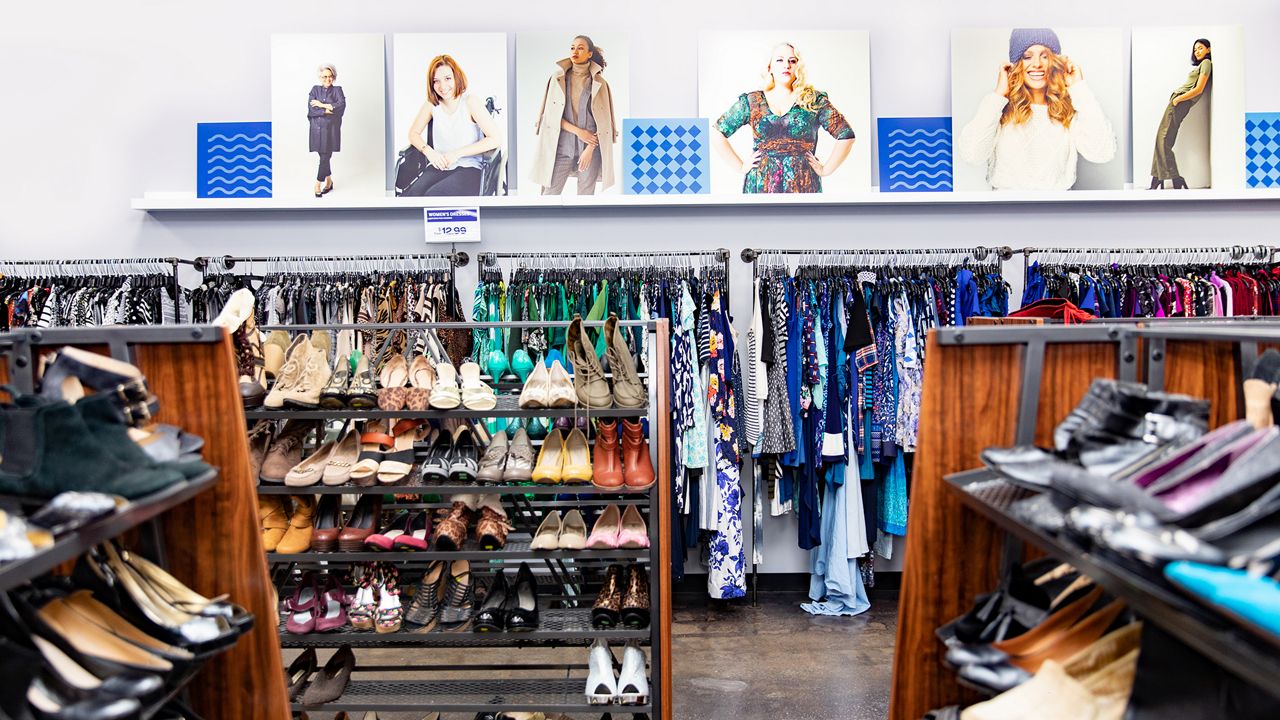Spring cleaning reached a whole new level this year as people spent their coronavirus lockdown time clearing out cluttered apartments and forgotten drawers.
In many cases, all that unwanted stuff ended up at thrift stores.
“We’ve had a huge increase in donations,” said Katy Gaul-Stigge, CEO of Goodwill Industries of Greater New York and Northern New Jersey. “I think that everyone actually had that same experience with being home, cleaning closets, having time to look at everything.”
Since Goodwill reopened its city locations as part of phase two, stores have seen a 75% increase in donations compared to the beginning of the year.
Although the packed shelves make for a more exciting treasure hunting experience for shoppers, charitable organizations are finding there can be too much of a good thing.
It's a trend that has impacted donation centers across the country, with a surge in supply creating storage problems that have left thrift stores scrambling to find additional space. In some cases, they've been forced to suspend donations.
During the spring, Goodwill in north Georgia had to ask people to hold onto their clothes at home and wait to donate at a later time. Recently, a shop on the Upper East Side had to also temporarily halt drop offs.
Organizations such as Goodwill are now trying encourage people to be more mindful of what they donate.
Since the start of the pandemic, Goodwill has reported receiving items in such poor condition they cannot be sold, resulting in charitable organizations having to spend money to dispose of the unwanted goods.
When Goodwill reopened, a lack of space was not expected to be an issue in the metropolitan area, according to Gaul-Stigge, because many of the stores have basements, extra storage rooms and warehouses.
But there's only so much room on the sales floor where new items are cycled through every hour while a store is open. If a good is not sold within a four-week period, it’s then sent to discount outlets and ultimately sold to global markets to be repurposed.
The system had worked well for years. But the pandemic has made things a bit trickier as Goodwill adapts to new safety protocols put in place in response to the pandemic.
“It’s tough. We are moving a lot of things around at once. The clothes have to be aired out for 72 hours without touching anything else.”
In addition to keeping clothes quarantined, a limited number of customers are allowed in the store at a time, which can make it more challenging to sell enough items to keep up with the flow of drop offs.
Since the shop on the Upper East Side temporarily suspended drop offs this week, Goodwill says it is now working to prevent the same thing from happening at other small stores in New York and New Jersey. A system has been put in place to relocate goods to warehouses at a faster pace in an effort to continue accepting donations, which are needed for the nonprofit to succeed.
The donated goods lead to more sales, which in turn fund job training and education for people who are disabled or unemployed.
“When you donate or shop at Goodwill you're supporting the community,” said Gaul-Stigge, “Donations are the fuel that makes Goodwill work.”
To keep up with the increase in donations and provide a safer shopping experience during the coronavirus pandemic, Goodwill plans to launch a virtual store by the end of the summer.



